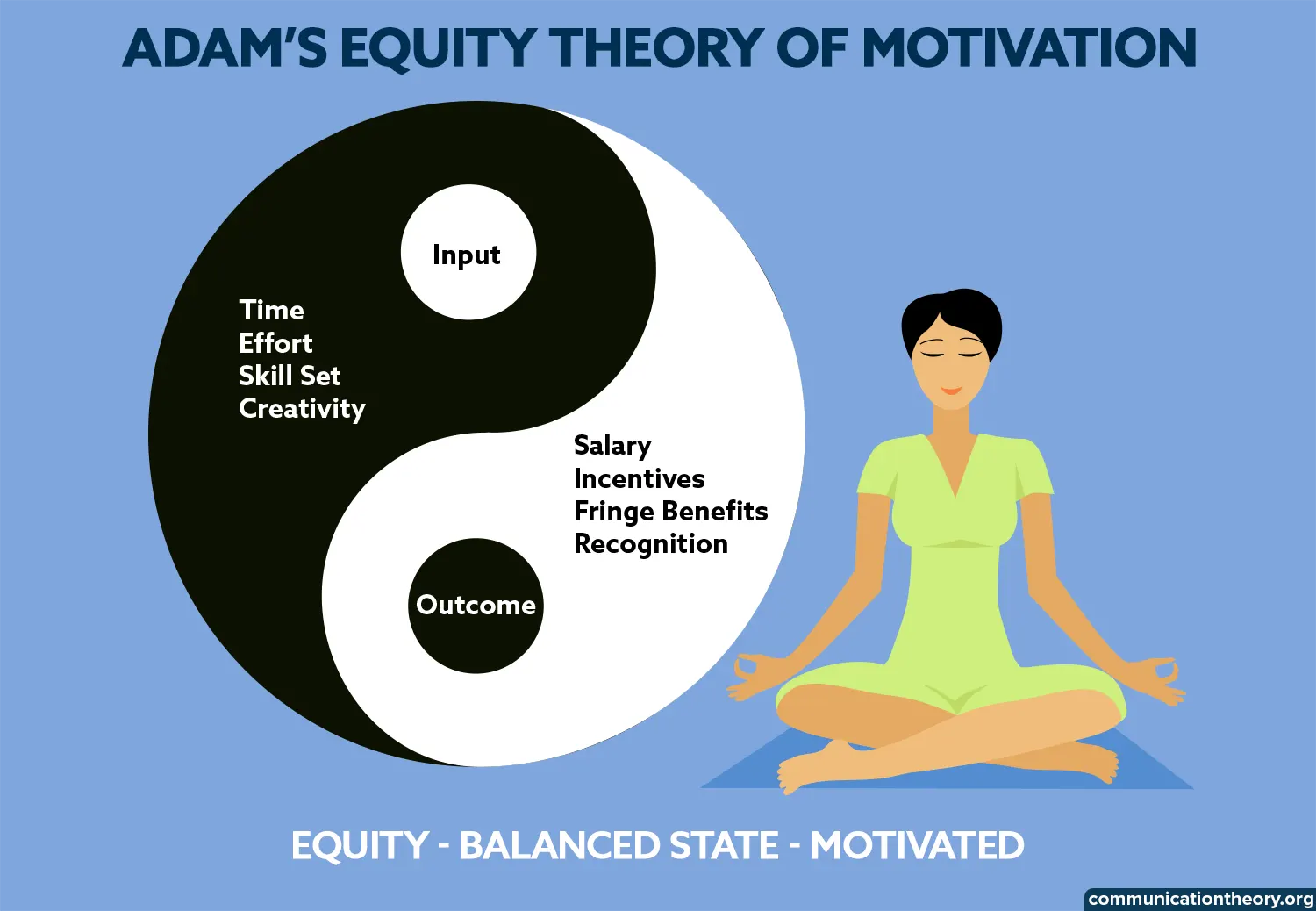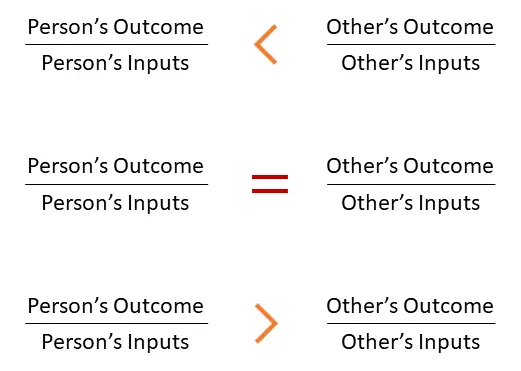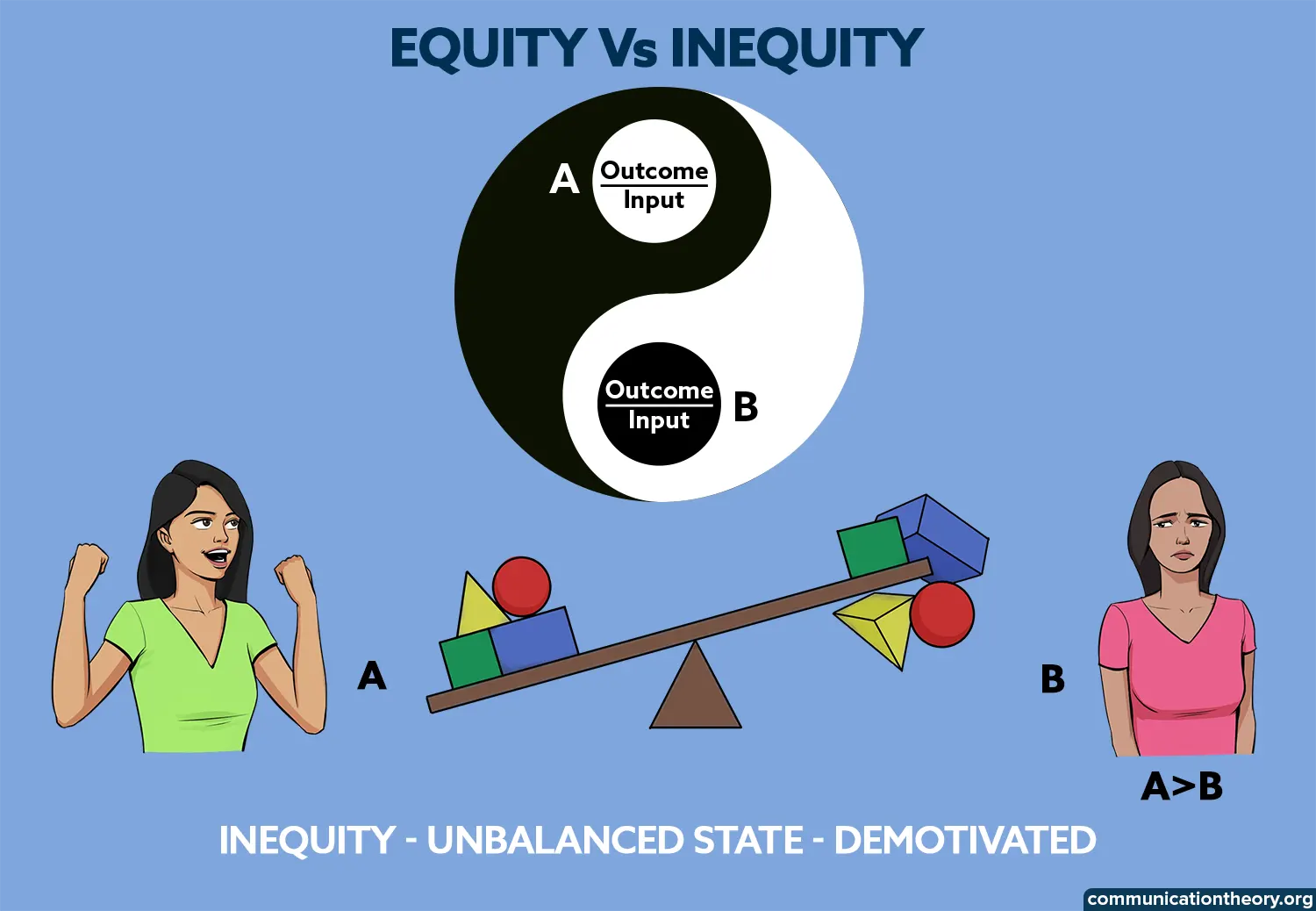Equity or fairness is a major quality people look for; be it in relationships, the workplace or any other area of life. This may determine many aspects of the aforementioned areas of life. Equity theory has been around for a long time and has received more attention and support compared to the others theories of work motivation.

What Is Equity And Why Do We Look Out For It?
Equity is the quality of being fair and just and we desire equity in any live setting because it satisfies our perception of ourselves and our efforts. Humans tend to frequently evaluate their level of performance or behaviour towards any particular thing and they expect the external environment to acknowledge the same and treat them accordingly.
For example, when Cristopher easily solved a math problem during class, he naturally expected the teacher to acknowledge his achievement with a round of applause or a nod of appreciation.
What Is Equity Theory?
Equity theory is a theory of work motivation proposed by J. Stacy Adams who was a social psychologist. It’s a simplistic theory that states that employees in the organization compare their level of job input and outcome that of the job input and outcome of their colleagues.
What Are Job Input And Outcome In An Organizational Setting?
Job input is nothing but the amount of effort, time, educational qualities, skill set, training experience, creativity etc. a person invests in their job.
The Outcome is the reward or the benefits a person receives as a result of the level of their job input. This includes the salary, incentives, monetary and non-monetary benefits, fringe benefits, recognition in the form of verbal or non-verbal appreciation, challenging tasks, work environment etc.
Basic Assumptions Of The Equity Theory
This theory states that job satisfaction and job performance are majorly determined by the degree of equity within the workplace. People look for equity within the organization among the employees.
Inequity occurs when a person perceives the ratio of their performance and the rewards are unequal in comparison to the relevant others in the organization. On noticing the potentiality of inequity, they work towards bringing it to a perceived state of equity.
It Is Considered To Be A State Of Equity When

An individual desires their job input and the outcome to be the same as that of another employee within the organization.
For example, Cara and Sara come from the same educational background, hold the same number of years of experience and are employed under the same job role. However, Cara is paid $ 500 more than Sara. This would make Sara perceive the situation as unequal or unfair.
Hence she would try to restore the imbalance by either putting in lesser effort or working more believing that her pay would be increased to the level of Cara. If these methods prove unsuccessful, she could also undermine her efforts by convincing herself that she isn’t putting in the same amount of effort as Cara or ultimately could choose to leave the organization altogether.

In other terms, a person may restore the inequity of being paid less by changing their inputs or outcomes, cognitive distort the input and outcome of themselves and others or leave the field or change the comparisons.
Is Overpayment Considered Unequal?
Stacy Adams also studied how overpayment was perceived by individuals. Contrary to the common assumptions, overpayment was also perceived as a form of inequity and employees preferred equal rewards rather than being overpaid.
He also found out that people are sometimes underworked or overworked to achieve an equitable reward system throughout the organization.
For example, when Cara realized that she was being paid more than Sara, she might choose to either work less so that her pay would be brought down to the same level as that of others or work more to feel worthy of receiving a pay higher than that of others.
Equity Theory In Relationship Context
This theory can also be viewed in terms of relationships where every party involved in any relationship expects equity between each other. People tend to get dissatisfied with the relationship irrespective of being under-benefitted or over-benefitted from their significant other.
During the initial stages of any relationship, the equity expectancy might not be as significant as when they pass over the so-called “honeymoon phase” of the relationship. When they under-receive, it would lead to anger and resentment on their part for not being reciprocated the investments they’ve pitched into the relationship.
On over-receiving, they might experience guilt or shame for not putting in as much effort, time or money as the other person. When the pattern continues to sustain for a long period without both the parties taking the needful efforts to bring the relationship to a state of equity, it could lead to the tie being severed.
Equity Theory In The Context Of Sports
Various research studies prove that this theory can successfully be applied to the context of sports settings such as football, baseball and basketball. Many researchers documented that when players were overpaid, they used their overpayment as leverage to upscale their performance.
Researchers claim that such a response is seen from the athletes because the field of sports is one such place where the compensation procured by the players is publicized and hence, they fall under the scrutiny of the public eye. They, therefore, need to create an opinion in the minds of the spectators that they are deserving of the remuneration they acquire.
Equity Theory In The Context Of The Workplace
The equity theory has been generally accepted and supported especially in work settings. However, the theory didn’t create significant changes in the work environment as it claims. Researchers found that people who are overpaid had more tolerance towards the inequity concerning the underpaid employees.
They also found out that not all people bother to compare their pay or rewards to others. Hence this theory doesn’t fit itself accurately to every workplace situation.